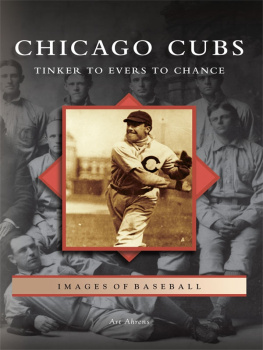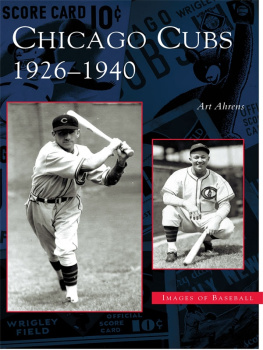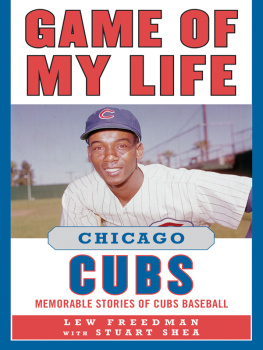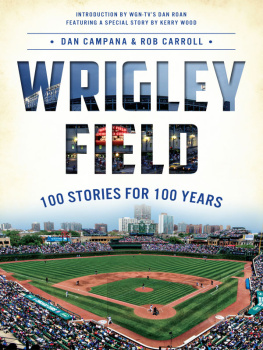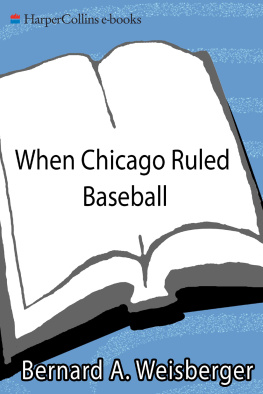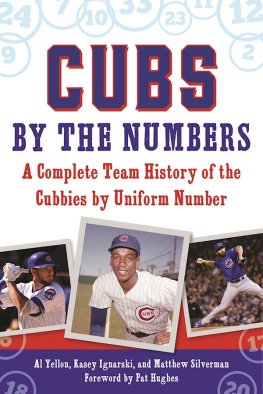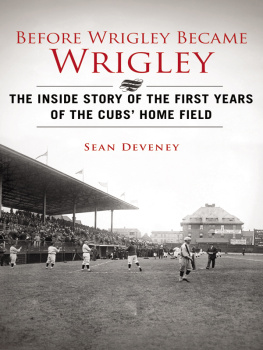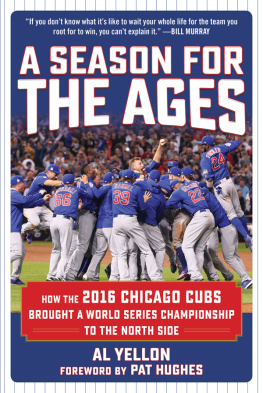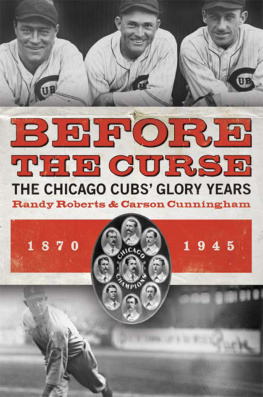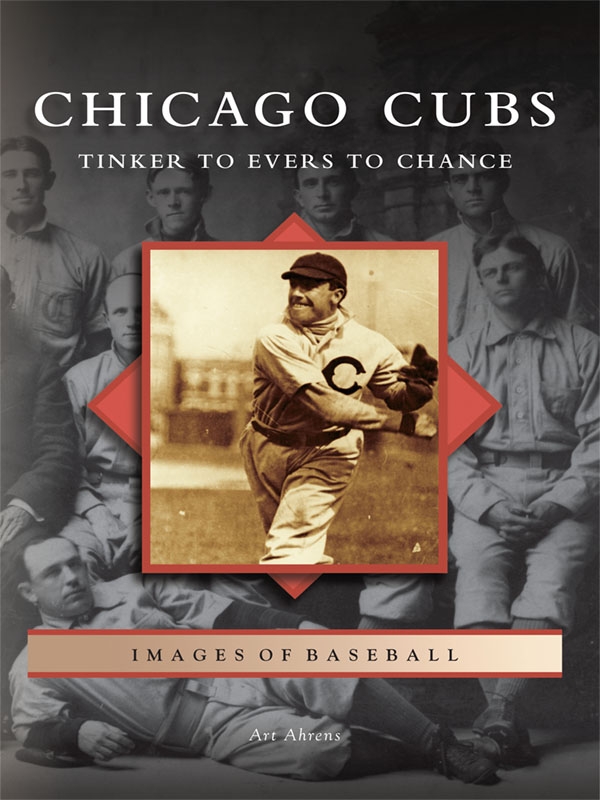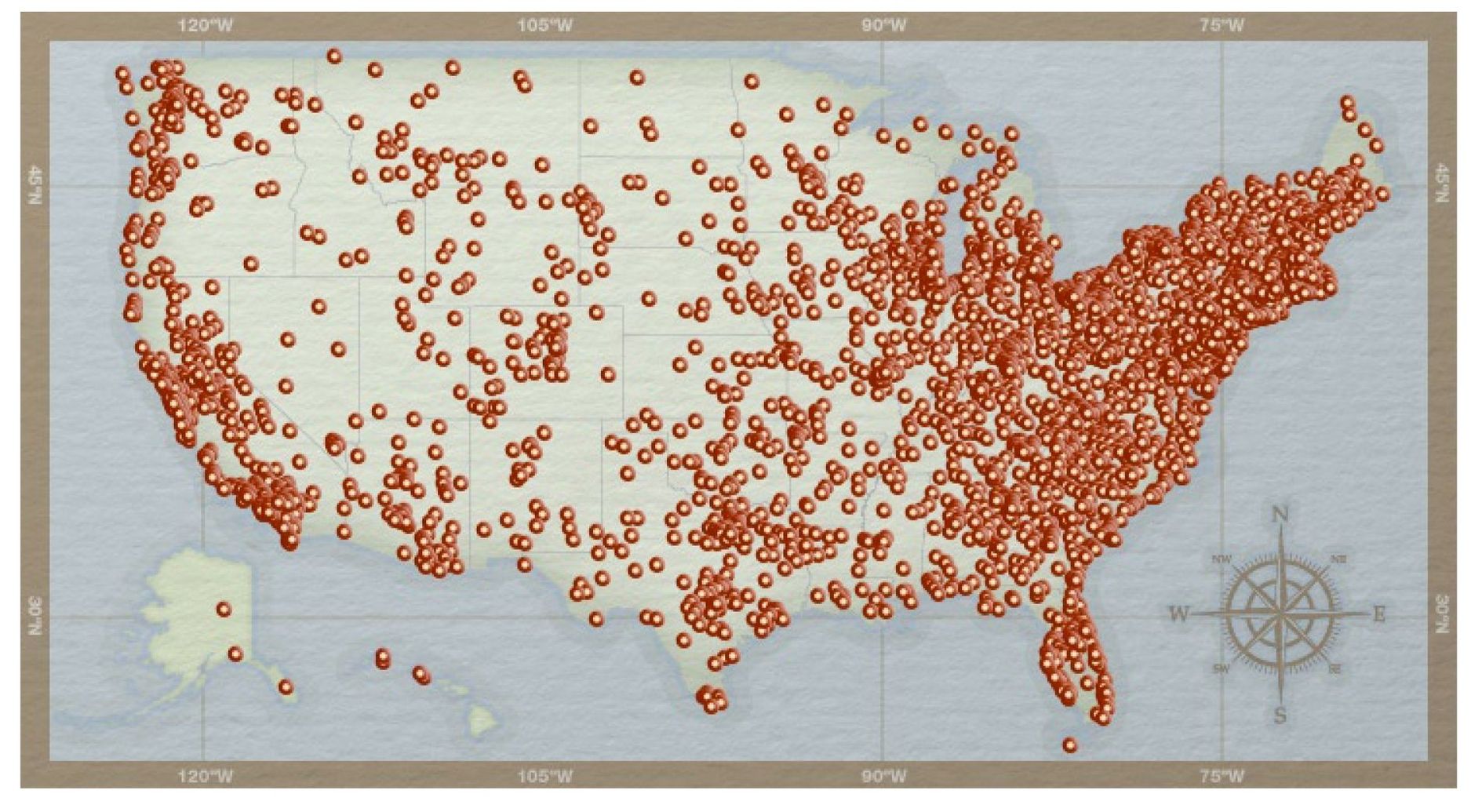1
THE BEGINNINGS
18981901
On February 1, 1898, Chicago baseball fans were given a jolt when the National League club Colts announced that Adrian Cap Anson was being released after 22 years as a player and the last 19 as field manager. Replacing him in the latter position was their former infielder Tommy Burns. Anson and Burns had been teammates when the team, then called the White Stockings, won five pennants in seven years between 1880 and 1886.
But as one epoch in the teams history was ending, another was beginning. Recruited by fellow Californian and star outfielder Bill Lange, a 20-year-old Frank Leroy Chance arrived at spring training camp at West Baden Springs, Indiana, on March 8, 1898. Manager Burns liked what he saw, and the young player was hired as backup catcher to regular receiver Tim Donahue.
Chance made his major-league debut on April 29, 1898, for the home opener at Chicagos West Side Grounds. Entering the game in the top of the ninth inning, Chance saw little defensive action and no at-bats in a 16-2 romp over Louisville, then a major-league city. For years it was commonly believed that pitcher Clark Griffith, who thought it was bad luck to pitch a shutout, ordered Chance to drop two pop flies so that a run could score. This is only partially correct. While Griffith was indeed superstitious concerning shutouts, the player he ordered to drop the ball was erratic first baseman Bill Everitt, not Chance. In baseball lore, however, old myths die hard.
Chance did not get to bat until May 11, when he went 0 for 2 against the great Cy Young during a 7-5 loss to the Cleveland Spiders. Despite his inauspicious start, Chance wound up the year with a .279 average in 53 gamesnot bad for a rookie.
And the 1898 Chicago Orphans were a pleasant surprise, too, finishing a solid fourth (85-65) in the 12-team league, after dragging in ninth the previous year. Pitching was the key to success as the staffs 13 shutouts and 2.83 ERA were both first in the circuit. Griffith savored the greatest season of his career, going 26-10 with a 1.88 ERA, plus four shutouts in spite of his superstition. Jimmy Callahan, in his second full year in the big time, won 20 games. Even Walt Thornton, whose career was otherwise nondescript, fired a 2-0 no-hitter over Brooklyns Trolley Dodgers on August 21.
Veteran Jimmy Ryan paced the hitting attack with a .323 average, followed by Lange and Everitt, at .319 apiece. Lack of good infield defense, however, was a nagging problem. While most fans resented the firing of Anson, it did not stop them from going to the ballpark in unprecedented numbers as a then-record 424,352 paying patrons entered through the turnstiles at West Side Grounds. For the first time in history, home attendance had surpassed the 400,000 mark in Chicago.
The future looked bright as the 1899 season grew near. That year spring training was held at a ranch in New Mexico about halfway between Deming and Silver City, and the writers began experimenting with nicknames containing a Western flavor. During that campaign, the newspapers often called them the Cowboys and the Rough Riders, although Orphans remained the primary name.
Off to a quick start, the Orphans were consistently at or near the lead throughout the early part of the year as fan enthusiasm reached a fever level. On April 30, 1899, a paid crowd of 27,489the largest in baseball annals up to that timeshoehorned its way into West Side Grounds on a damp, humid Sunday afternoon in which additional streetcars were pressed into service to alleviate the foot traffic. Jimmy Callahan, despite surrendering 12 hits, whitewashed the Cardinals, 4-0, on this historic date.
Through July 13, the Orphans were 43-27 and looked like a solid contender. Then came a season-long tailspin as Tommy Burns appeared to be losing control over the team amid dissension within the ranks. The pitching staff showed diminishing results from the previous year. Furthermore, the loss of shortstop Bill Dahlen via an inept trade made an already shaky infield even weaker. As the team declined, so did home attendance. At the end of the year, with the team finishing just two games above the break-even mark, Bill Lange announced his retirement to marry the daughter of a wealthy San Francisco real estate magnate who disapproved of baseball as a means to make a living. Finally, Tommy Burns was axed as manager even though the teams problems were largely no fault of his.
During the winter of 18991900, the National League contracted from 12 clubs to 8. With the forgotten Tom Loftus as new manager, Orphans owner Albert Spalding and mouthpiece president James Hart were confident that the team would do better in the shrunken league, but their hopes were ultimately dashed. In a season schedule that was trimmed from 154 games to 140, the 1900 Chicago Nationals finished in a disappointing tie for fifth with the St. Louis Cardinals at 65-75. While the pitching was generally good (the staff ERA of 3.23 was second in the league), they were betrayed by lack of hitting as the team batting average of .260 was last in the circuit. And the defense continued to have more holes than Swiss cheese with a hefty 418 errors, second worst to the New York Giants.
On June 19, 1900amid this otherwise forgettable summerGriffith pitched the greatest game of his career, going the distance to beat the Pittsburgh Pirates and Rube Waddell, 1-0, and driving home the winning run with a single in the last of the 14th inning at West Side Grounds. Not long thereafter he renounced his superstition regarding shutouts and ended up leading the league in that arena with four.
When Jimmy Ryans batting average dropped to .277, the aging outfielder was released near the end of September. As the teams last link to Adrian Cap Ansons halcyon days of the 1880s, he was sorely missed. On a positive note, the seasons final weeks also witnessed the arrival of catcher Johnny Kling, who would quickly rise to prominence. But as 19th-century baseball in Chicago drew to a close, some extremely rough times were ahead.
The new century brought new problems to the National League as it celebrated its 25th anniversary. The fledgling American League, originally formed in 1895 as the Western League, a midwestern minor circuit, declared itself a major league in 1901. When the National League refused to recognize its new competitor, the youthful confederation retaliated by raiding the older leagues clubs, luring away established stars with plush contracts.

